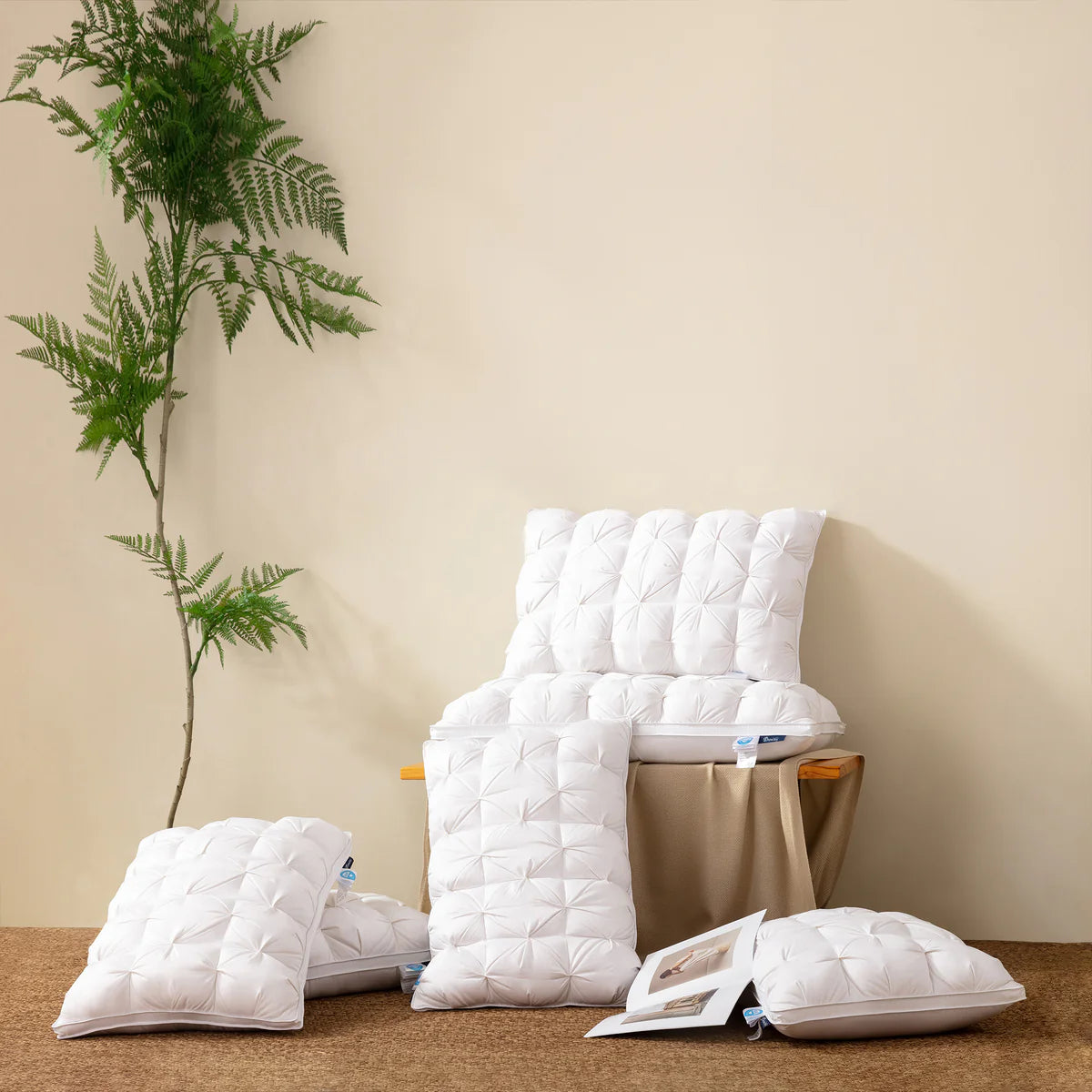Crafting the perfect sleep sanctuary involves more than just a great mattress. Pillows play a crucial role too, acting as the unsung heroes of a good night's rest.
Among the plethora of choices, down and feather pillows stand out for their unrivaled softness. But how do you decide which one is the perfect fit for you? Comparing their ability to provide a comfortable nest for your head is key to unlocking a night of supportive slumber.
The decision largely hinges on what feels most comfortable to you, especially considering your preferred sleeping position. In this guide, we'll delve into the key distinctions between down and feather pillows, equipping you with the knowledge to pick your ultimate sleep companion.
Down Pillow
Feather Pillows
Feathers, unlike down, are harvested from the external parts of ducks and geese, such as the back and wings. These are the same feathers often found on the ground or used historically in quill pens.
Feather-filled pillows offer softness but come with a few disadvantages:
-
Quill Presence: Feathers have quills that might poke through the pillow, causing discomfort.
-
Tendency to Flatten: Their flatter structure means feather pillows can lose shape more quickly and require regular fluffing.
-
Lesser Durability: Compared to down, feather pillows may wear out faster and need replacing more often.
Despite these drawbacks, feather pillows have their own set of benefits, especially when it comes to:
-
Affordability: They are typically more budget-friendly than down pillows while still providing softness.
- Adjustability for Sleep Position: Ideal for side and stomach sleepers, feather pillows can be easily adjusted or folded for personalized support around the head and neck.
5 Key Difference Between Feather and Down

Now you have a picture about their features and advantages, it's time to sum up their difference as pillow materials.
-
Composition and Comfort Level
Down pillows are known for their luxurious softness, offering a plush and cloud-like feeling that gently cradles the head and neck. They are filled with the fine, fluffy undercoating found beneath the feathers of ducks or geese. In contrast, feather pillows contain the outer feathers of these birds, which are larger and have quills. While still comfortable, feather pillows tend to be firmer and may provide more support than down pillows. This difference in composition directly impacts the comfort level and suitability for different types of sleepers, making down pillows a preferred option for those seeking softer, more malleable support. -
Durability and Lifespan
Both down and feather pillows have impressive longevity, but down pillows often outlast their feather counterparts due to the resilience and inherent softness of the down clusters. With proper care, down pillows can maintain their loft and comfort for years, while feather pillows might start to flatten sooner due to the quills in feathers potentially breaking down over time. Regular fluffing and professional cleaning can extend the life of both types of pillows, but down's durability makes it a more cost-effective investment in the long run. -
Allergy Considerations
Hypoallergenic properties are a critical factor for many shoppers. Down pillows, especially those with high fill power and encased in high-thread-count covers, can be less likely to harbor dust mites and other allergens compared to feather pillows. However, advancements in pillow manufacturing have introduced special cleaning processes for both down and feather materials, significantly reducing allergenic potential. Look for pillows that have undergone hypoallergenic treatments for the safest bet if allergies are a concern. -
Maintenance and Care
The care required for down and feather pillows can influence a buyer's decision. Both types require similar maintenance, including regular airing, fluffing, and the use of pillow protectors to extend their life. However, down pillows may need more delicate handling when washing—often recommended to be done professionally or according to manufacturer instructions to avoid damaging the down clusters. Feather pillows can be somewhat more forgiving but still require care to prevent damage to the feathers. -
Price Comparison and Value
Generally, down pillows are priced higher than feather pillows due to the premium comfort, longer lifespan, and the labor-intensive process of harvesting down. However, the investment in a down pillow can offer better value over time, considering its durability and the quality of sleep it can provide. Feather pillows, offering a firmer sleeping surface at a more affordable price point, present a budget-friendly option for those prioritizing cost over plushness.
Down vs Feather: Which is the Best Pillow?



